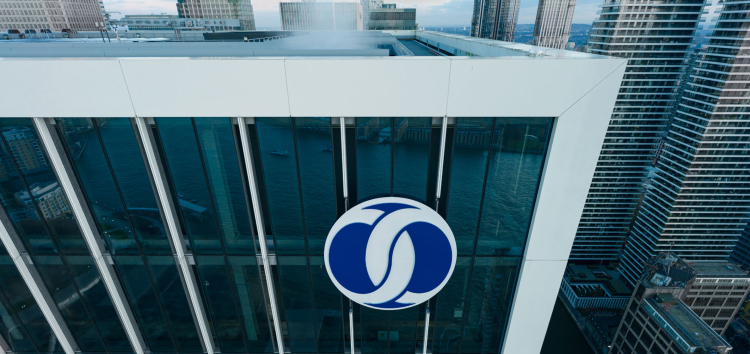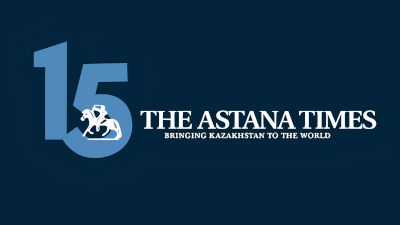ASTANA – The European Bank for Reconstruction and Development (EBRD) invested 913 million euros (US$942.8 million) across 25 projects in Kazakhstan in 2024, marking a more than triple increase in its annual investments, reports the bank’s press office.

In 2024, the EBRD invested a record 16.6 billion euros (US$17.1 billion) across its economies, marking a 26% growth compared to the previous year. Photo credit: ebrd.com
Of this, 61% of the investments went to green economy projects.
“Overall, the main factor is that the economy in Kazakhstan is growing. We are a demand-driven institution. There are projects, if there is demand. If there is more demand, there will be more investments. This is why we are seeing, overall in Central Asia, an increased demand for projects, particularly in the private sector,” EBRD Managing Director for Central Asia Hüseyin Özhan told The Astana Times in a comment for this story.
Milestone year in Central Asia
Last year was a record-high year for the EBRD’s investments in Central Asia, which totaled almost 2.26 billion euros ($2.3 billion) across six countries. These numbers surpassed the projections that Özhan shared with The Astana Times in October.
The bank supported 121 projects. More than 60% of the financing was earmarked for sustainable infrastructure projects and 58% for green economy projects.
“To be very frank, all the stars aligned, and we managed to get there,” he said. “Also, on top of it, we have almost 800 million euros ($829.4 million) of mobilized financing.”
In 2024, Uzbekistan and Kazakhstan secured the most extensive funding from the EBRD across the region, with 938 million euros ($968.6 million) and 913 million euros ($942.8 million), respectively. This makes them the bank’s fifth and sixth-largest investment destinations globally.
In other parts of Central Asia, the EBRD invested 264 million euros ($272.6 million) in Mongolia, 88 million euros ($90.9 million) in Tajikistan, and 52 million euros ($53.7 million) in the Kyrgyz Republic.
Key projects
Some of the projects were the first of their kind in Kazakhstan and the region of Central Asia.
The construction of a new wastewater treatment plant in Aktobe, western Kazakhstan, for which the EBRD provided a 96.4 million euro ($99.5 million) loan, became the bank’s largest municipal project in Central Asia.
The construction and operation of a 630-bed multidisciplinary hospital in Kokshetau, in the country’s north, secured a financing package of 365 million euros ($376.8 million) from six financial institutions, including the EBRD’s 105 million euros ($108.4 million).
Özhan highlighted that this project was in the making “for years.”
The financing will be provided to the Kazakhstan-based subsidiary of Türkiye’s Rönesans Holding, a company active in construction, real estate, infrastructure, healthcare, and energy in 30 countries. According to EBRD, this is a groundbreaking public-private partnership (PPP), the first of its kind in Kazakhstan and Central Asia’s healthcare sector.
Another milestone for EBRD came in August when the bank made its first direct equity investment in Central Asia’s critical raw materials sector. It acquired a 17.36% stake in Sarytogan Graphite Limited, an Australian Securities Exchange-listed company exploring the graphite deposit in the Karagandy Region.
The bank also invested $42 million into shares of Kazakhstan’s Air Astana through an initial public offering.
“We have been talking about the rollout of renewable energy in Kazakhstan. A lot of projects have been done. We have been involved in almost one third of the financing of the installed capacity of renewable energy projects in Kazakhstan,” said Özhan.
In December, the EBRD also arranged a financing of 262 million euros ($270.5 million) for the Kazakhstan Electricity Grid Operating Company (KEGOC), a national power grid operator that manages over 27,800 kilometers of power lines across Kazakhstan. The financing comprises 252 million euros ($260.2 million) from the EBRD and a concessional loan of 15 million euros ($15.5 million) from the government of Canada under the High Impact Partnership on Climate Action.
The funding will support KEGOC’s efforts to build around 600 kilometers of high-voltage 500-kilovolt transmission lines. The project will also help connect the West Kazakhstan Power System to the country’s Unified Power System.
In 2024, EBRD also funded a renewable hydrogen project in Uzbekistan, the first of its kind in Central Asia. The project will feature a 20-megawatt electrolyzer and a new 52-megawatt wind power plant.
The EBRD provides a $65 million financial package to ACWA Power UKS Green H2, a joint venture between ACWA Power and Uzkimyosanoat (UKS), a state-owned chemical industry holding company in Uzbekistan.
“We were also involved with the Kazakhstan Temir Zholy refinancing project, which also supports one of the themes of the Trans-Caspian corridor [Trans-Caspian International Transport Route]. It is a refinancing project, but, in essence, the balance sheet restructuring and availing funds for KTZ to be able to invest in other priority projects, which includes, as you know, the Trans-Caspian corridor,” he said.
Private sector
Supporting the private sector is a priority for the EBRD, as envisioned in the bank’s country strategy.
In 2024, the bank kicked off 188 advisory projects in Kazakhstan through its Advice for Small Business program. More than half of these projects targeted women entrepreneurs, and 60% were in the regions.
Across the region, the program reached more than 450 small and medium-sized businesses.
“We are seeing, on the Kazakh side, an increased approach towards modernization of the infrastructure sector across the board. We are seeing that there is a big national infrastructure plan, which is being finalized. (…) We will be there as EBRD to continue to support,” said Özhan.
Globally, EBRD had the record 16.6 billion euros ($17.2 billion) of investments in 2024, a 26% percent growth compared to the previous year.
EBRD President Odile Renaud-Basso said the impact was both in volume and quality.
“In fact, we not only beat records, but went far beyond them,” she said. “Demand for our unique business model of financing combined with policy advice grows with every year that passes. Our capacity to respond to the evolving needs of our clients must keep pace with these changes.”


